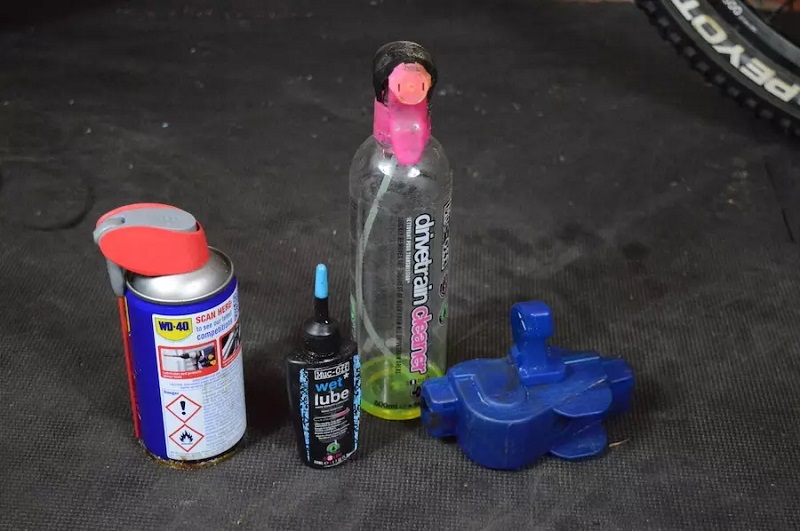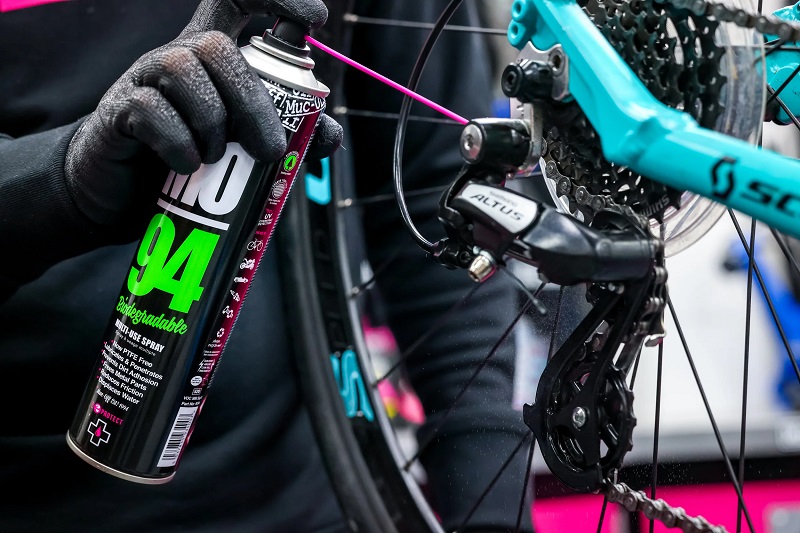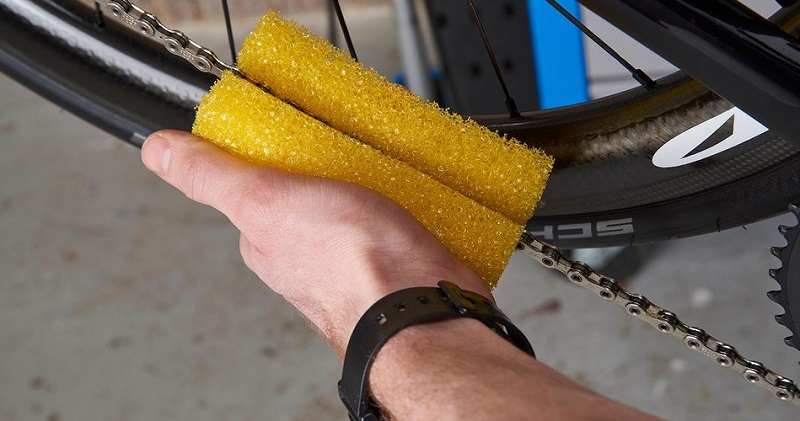Tips
How To Remove Rust From Bike Chain At Home?
A bike chain is more than just a series of metal links connected together. It is the heart of your bicycle, ensuring seamless transmission from the pedals to the wheels. When a bike chain becomes rusty, not only does it affect the performance of the bike, but it also shortens the lifespan of the chain. HookBike understands the significance of maintaining a clean, rust-free bike chain, and in this guide, we will walk you through the steps on how to remove rust from bike chain at home.
Why Does Rust Form on Bike Chains?
Rust forms on bike chains primarily due to the reaction between moisture (from rain, humidity, puddles, or sweat) and the iron content in the steel that most chains are made of. Here’s a breakdown of the process:
Oxidation of Iron: The primary component of rust is iron oxide. Rust forms when iron reacts with oxygen in the presence of moisture. The chemical equation for this reaction is:
- 4Fe + 3O2 → 2Fe2O3
This equation shows that iron (Fe) reacts with oxygen (O2) to form iron(III) oxide (Fe2O3), which is commonly referred to as rust.
Role of Water: While oxygen is always present in the air, the presence of water (in the form of humidity, rain, puddles, etc.) significantly accelerates the rusting process. Water acts as an electrolyte and facilitates the electrochemical reactions that form rust.
Salt and Electrolytes: If you live near the ocean or if you ride your bike on roads that have been salted in the winter, the salt can dramatically speed up the corrosion process. This is because salt dissolves in water to produce ions, which can enhance the conductivity of water and make it an even better electrolyte for rusting. Furthermore, salt can form corrosive compounds with iron, further damaging the chain.
Protection Wears Off: Many bike chains come with a layer of grease or other protective coatings that help prevent rust. Over time, this protective layer can wear off due to friction, exposure to elements, and regular use. Once the protection is gone, the metal is more exposed to the elements that cause rust.
Lastly, if a chain starts to rust, it’s crucial to address it as soon as possible. A rusty chain can compromise the efficiency of your ride and, more importantly, can be a safety hazard as it’s more prone to breakage.

Step-by-Step Guide: How To Remove Rust From Bike Chain At Home?
Removing rust from a bike chain at home can be achieved using common household items and a bit of elbow grease. Here are some steps and methods you can use:
1. Gather Your Supplies
Before starting, ensure you have the following:
- A soft-bristle brush or old toothbrush
- Baking soda
- Lemon juice or white vinegar
- Lubricant or bike chain oil
- Rags or old towels

2. Prepare a Rust-Removal Solution
Mix equal parts of baking soda and lemon juice (or white vinegar) in a bowl to form a thick paste.
3. Detach the Chain (Optional)
While you can clean the chain while it’s still on the bike, detaching it can make the process smoother. Use a chain breaker tool to disconnect the chain.
4. Apply the Rust-Removal Solution
Dip the brush into the solution and scrub the rust off the chain, focusing on heavily rusted areas. The combination of baking soda and lemon juice acts as a mild abrasive, gently removing the rust.
5. Rinse and Dry
After scrubbing thoroughly, rinse the chain with water. Ensure you dry it completely with a towel to prevent any further rusting.
6. Lubricate the Chain
Once the chain is dry, apply a generous amount of lubricant or bike chain oil. This not only ensures smooth operation but also forms a protective layer against moisture and rust.
7. Reattach the Chain (If Removed)
Using the chain breaker tool, reattach the chain to your bicycle.

Methods for removing rust from bicycle chains
Here are some steps and methods you can use:
Soap and Water:
- Start with the basics. Often, a mixture of dish soap and water can help remove light rust and grime.
- Use a brush (an old toothbrush works well) to scrub the chain with the soapy water mixture.
Vinegar:
- Soak the chain in white vinegar for a few hours. The acid in the vinegar can help dissolve the rust.
- After soaking, use a brush to scrub off the rust.
- Rinse the chain thoroughly with water to remove the vinegar and any remaining rust particles.
See more: How To Clean And Lube A Bicycle Chain

Baking Soda and Water:
- Make a paste using baking soda and a small amount of water.
- Apply the paste to the rusty areas of the chain and let it sit for about 10-15 minutes.
- Scrub with a brush, then rinse off the paste with water.
Lemon Juice and Salt:
- The acid in lemon juice can help dissolve rust, and salt can act as a mild abrasive.
- Mix lemon juice with a bit of salt to form a paste.
- Apply to the rusty areas, let it sit for a few minutes, then scrub with a brush.
- Rinse the chain thoroughly.
Commercial Rust Removers:
- There are several commercial rust removers available in stores. If the household methods don’t work, you might consider purchasing one of these.
- Always follow the manufacturer’s instructions and use in a well-ventilated area.
Lubricate:
- After removing the rust, it’s crucial to thoroughly dry the chain and then lubricate it. This not only ensures smooth operation but also provides a protective layer that helps prevent future rust.

Prevention:
- To prevent future rusting, always dry your bike chain if it gets wet and regularly lubricate it. Storing your bike in a dry place can also help.
Note: When working on your bike chain, it might be easier to remove the chain using a chain tool. This allows for more thorough cleaning, especially if the rust is extensive. However, if you’re not comfortable doing this or if you don’t have a chain tool, you can still clean the chain while it’s on the bike. If the chain is excessively rusty and compromised, consider replacing it entirely for safety reasons.
Additional Tips for Rust Prevention
Preventing rust is always better than having to deal with it later. Here are some additional tips for rust prevention, especially in the context of bicycle maintenance:
Choose Rust-Resistant Chains: Some chains are made of materials or come with coatings that are more resistant to rust. Stainless steel chains or chains with special coatings can be a good investment if you live in a humid or coastal environment.
Frequent Inspection: Regularly check your bike for signs of rust, not just on the chain but also on other metal parts. Early detection can make rust removal much easier.
Avoid Wet Conditions: If possible, avoid riding your bike in the rain or through water puddles. If you do, make sure to dry it off as soon as you’re done.
Indoor Storage: Always store your bike indoors or under a protective cover. If storing in a garage or shed, ensure it’s not damp inside.
Regular Cleaning: Dirt and grime can trap moisture against the bike’s parts. Regularly clean your bike, paying special attention to the chain.
Use Protective Sprays: There are anti-rust sprays available that can provide a protective layer on metal surfaces. These can be applied to your bike’s chain and other parts to help shield them from moisture.
Avoid Salty Environments: If you live near the coast or in areas where roads are salted in the winter, be aware that salt can accelerate rusting. Rinse your bike with fresh water if it comes into contact with salt or saltwater.
Optimal Lubrication: Use a good quality lubricant specifically designed for bike chains. Some lubricants come with added rust inhibitors. Make sure to reapply regularly, especially after cleaning or riding in wet conditions.
Covered Parking: If you must park your bike outside for extended periods, consider using a bike cover to protect it from rain and dew.
Keep Other Components Dry: Rust can form on other parts of the bike, like bolts, handlebars, and spokes. After a wet ride, give your bike a quick wipe down to remove moisture from these components.
Regular Maintenance: Periodically, take your bike in for a professional tune-up or do it yourself at home. Ensuring all parts are in good condition and properly lubricated can extend the life of your bike and keep rust at bay.
Consistent care and a proactive approach to rust prevention will keep your bike in good condition, extending its lifespan and ensuring safe rides.
Conclusion: Enjoy a Rust-Free Riding Experience
By following the steps outlined above, not only will you extend the life of your bike chain, but you’ll also enjoy a smoother, more efficient ride. Remember, regular maintenance is key. By taking proactive measures, you can easily prevent rust from forming on your bike chain and ensure a seamless biking experience.

